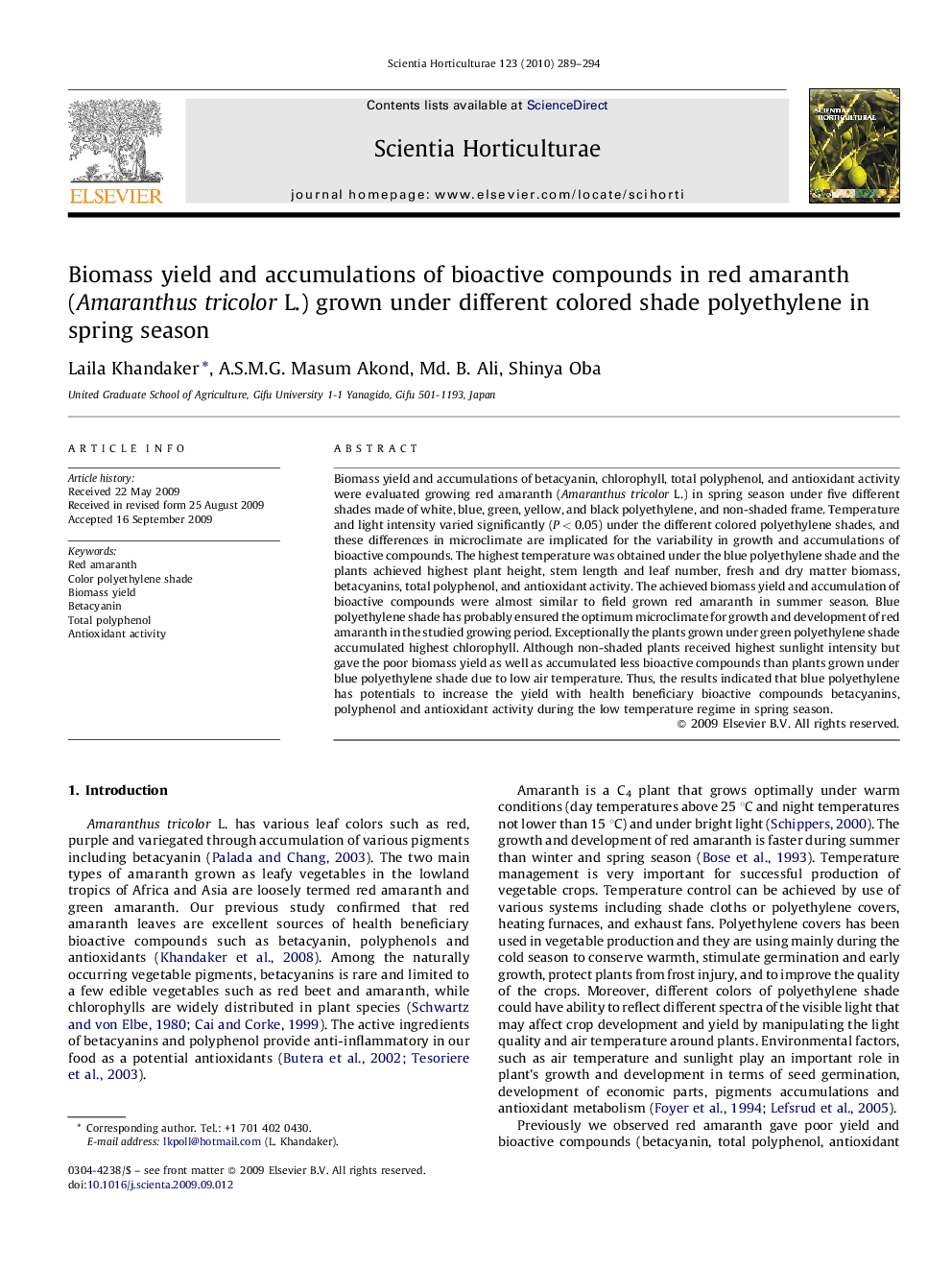| Article ID | Journal | Published Year | Pages | File Type |
|---|---|---|---|---|
| 4568214 | Scientia Horticulturae | 2010 | 6 Pages |
Biomass yield and accumulations of betacyanin, chlorophyll, total polyphenol, and antioxidant activity were evaluated growing red amaranth (Amaranthus tricolor L.) in spring season under five different shades made of white, blue, green, yellow, and black polyethylene, and non-shaded frame. Temperature and light intensity varied significantly (P < 0.05) under the different colored polyethylene shades, and these differences in microclimate are implicated for the variability in growth and accumulations of bioactive compounds. The highest temperature was obtained under the blue polyethylene shade and the plants achieved highest plant height, stem length and leaf number, fresh and dry matter biomass, betacyanins, total polyphenol, and antioxidant activity. The achieved biomass yield and accumulation of bioactive compounds were almost similar to field grown red amaranth in summer season. Blue polyethylene shade has probably ensured the optimum microclimate for growth and development of red amaranth in the studied growing period. Exceptionally the plants grown under green polyethylene shade accumulated highest chlorophyll. Although non-shaded plants received highest sunlight intensity but gave the poor biomass yield as well as accumulated less bioactive compounds than plants grown under blue polyethylene shade due to low air temperature. Thus, the results indicated that blue polyethylene has potentials to increase the yield with health beneficiary bioactive compounds betacyanins, polyphenol and antioxidant activity during the low temperature regime in spring season.
